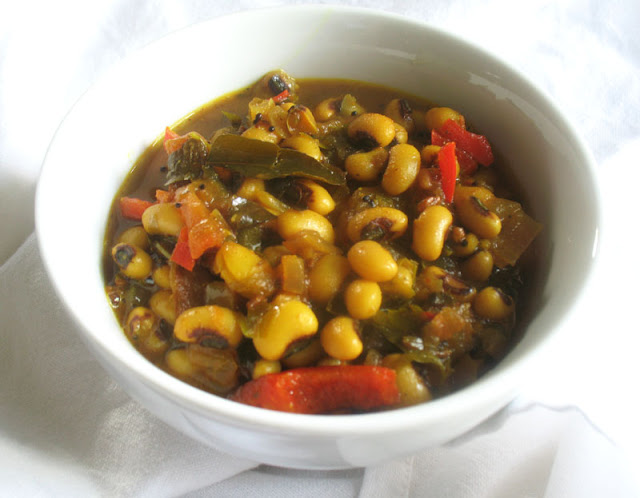One doesn't have to be of Indian descent to enjoy Indian cooking and flavors. In fact, although I was born and raised here in Ontario, Canada, it became my favorite cuisine by far to cook and eat only shortly after becoming vegetarian. And considering India has a strong vegetarian culture, it seemed like a perfect fit, especially for someone who appreciated food with finesse. I was amazed by the multitude of spices and styles and the vast array of not only mains, but appetizers, savory breads and desserts. The more I researched and experimented in my own kitchen, the more I was enchanted by the uniqueness and variety that characterize the different regions of Indian. When you factor in the influences from other nearby cultures and the crossover between the regions within Indian itself, the magic that one can work in their own home kitchen is awe inspiring.
As a result of British interests and control of Indian, Indian food was eventually popularized in Britain. Immigration also resulted in the popularity of Indian cooking world wide.
The vast majority of offerings at Indian restaurants I have encountered on this side of the globe seem to be heavily influenced by North India creations, often with an Anglo-Indian twist. But the availability of ingredients in the modern age make it possible for home cooks — or restaurants if they choose — to experiment with a variety of regional creations with attention to traditional preparations with or without a fusion twist.
Early on I became particularly smitten with South Indian dishes. North Indian dishes tend to be less spicy, and the focus is more on dairy and such popular cheeses such as paneer and breads such as naan and roti. Rice is a staple in both cuisines, but South Indian cooking gives rice a more primary role. Dosa, a fermented crêpe with rice and lentils is a staple, and fried fritters such as vada and steamed savory cakes like idli are also signature. Tamarind and coconut milk are often central to many of the dishes served and central to a traditional meal are soupy rasams and sambars which are a lentil and vegetable based thick soup-like course.
The sambar I feature here features earthy black-eyed peas rather than lentils, with tamarind for a sweet and sour element, a healthy dose of spices, including my homemade fragrant sambar powder, a bit of red pepper and some tomato for a bit of tanginess. This might not be the most traditional of creations, but it surely went well with some steaming hot basmati rice.
 Spicy Black-Eyed Pea Sambar Spicy Black-Eyed Pea Sambar |
| Recipe by Lisa Turner Cuisine: South Indian Published on November 3, 2015 A thick and zesty south Indian black-eyed pea and tomato curry seasoned with an array of spices and flavored with sweet and sour tamarind Preparation: 15 to 20 minutes + 40 to 60 minutes soaking Cooking time: 20 to 25 minutes  Print this recipe Print this recipeIngredients:
|
Other sambars to enjoy from Lisa's Kitchen:
Drumstick Sambar with Seared Eggplant
Vegetable Coconut Sambar
Bangalore Sambar with Toor Dal and Lima Beans
Tamarind Sambar





3 comments:
This is the first time I'm learning about MY LEGUME LOVE AFFAIR(MLLA) # 89 and reading it's a yearly event. Love your recipe and hope you enjoy looking at my blog post for Organic Red Lentil at http://obloggernewbie.blogspot.com/2015/06/surprising-features-and-recipes-for.html Nancy A.
This black eyes sambhar looks and sounds great, I love the combination of spices dear, this will go very well with rice or roti.
Thanks for sharing with MLLA.
Please come and see the roundup of MLLA.
Post a Comment